When I first walked through the ancient streets of Messene, I instantly wondered—why isn’t everyone talking about this place? Ancient Messene stands out as one of the most underrated archaeological sites in Greece, mixing grand history with breathtaking ruins that honestly left me stunned.
Unlike the crowded tourist spots, Messene felt open, peaceful, and shockingly well-preserved.
As I passed the massive stadium, poked around temple ruins, and imagined daily life here thousands of years ago, I realized how much this place has to offer. There’s a real sense of discovery—almost like ancient travelers left clues for us to stumble upon.
If you’re looking to go beyond the usual Greek ruins and find a spot where the past still whispers from the stones, you really need to put Ancient Messene on your travel list.

The Story Behind Ancient Messene
As I wandered through Ancient Messene, I felt the centuries pressing in around me. This city carries deep legends and tangled histories that shaped its special place in Greece.
Founding Myths and Historical Roots
Ancient Messene’s story starts with myth. The city got its name from Queen Messene, a legendary figure and supposedly the region’s first queen. Some old stories even tie her lineage to King Triopas of Argos and the heroic age.
Messene sprang up in 369 BCE, right after the Thebans and Epaminondas freed the Messenian people from Spartan rule. They didn’t pick the site by accident—nestled beneath Mount Ithome, it had served as a stronghold in earlier times and even pops up in Homer’s tales.
Its location protected its people and let the city thrive, all while neighboring Sparta loomed large in the background.
During the archaic and classical eras, Messene kept bouncing back from hardship. Its history shines as a symbol of struggle, survival, and reclaiming identity after long years of conflict.
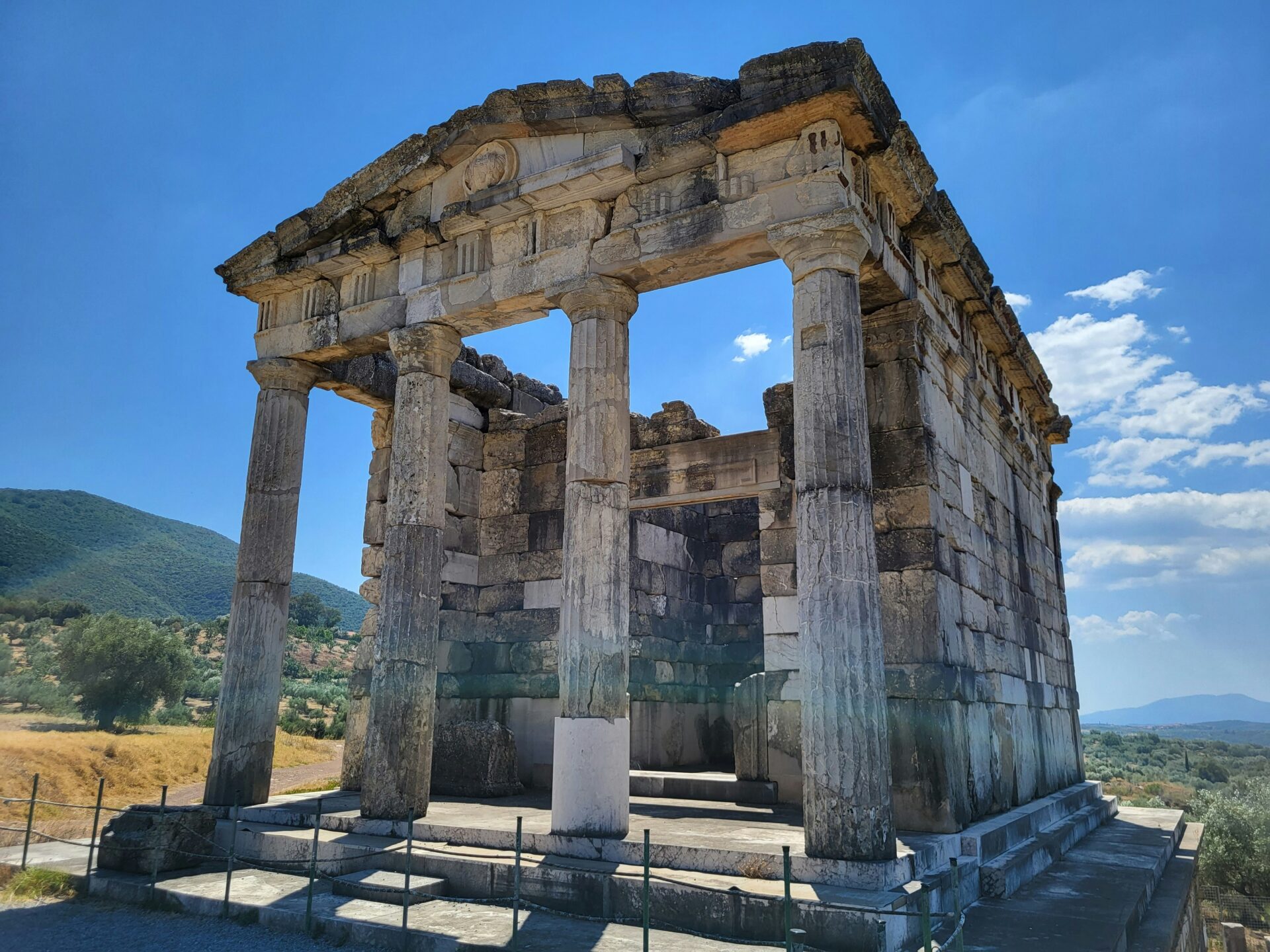
Messene in the Context of Hellenism
When I walked the huge site, I could see how Ancient Messene fit into the world of Hellenism. After its rebirth, the city became a model of urban planning in the late classical period. The walls and towers—seriously, some of the best Greek military architecture I’ve seen—still stand tall.
Breaking free from Sparta allowed Messene to flourish, especially in the Hellenistic era. The agora buzzed with life, statues lined the walkways, and inscriptions covered the stones. Political life thrived, and the city’s layout mirrored the order and communal spirit seen across Hellenistic Greece.
Messene didn’t just compete with other city-states; it joined in the broader Greek world. Inscriptions from this period show a city deeply involved with its neighbors and the bigger pan-Hellenic scene.
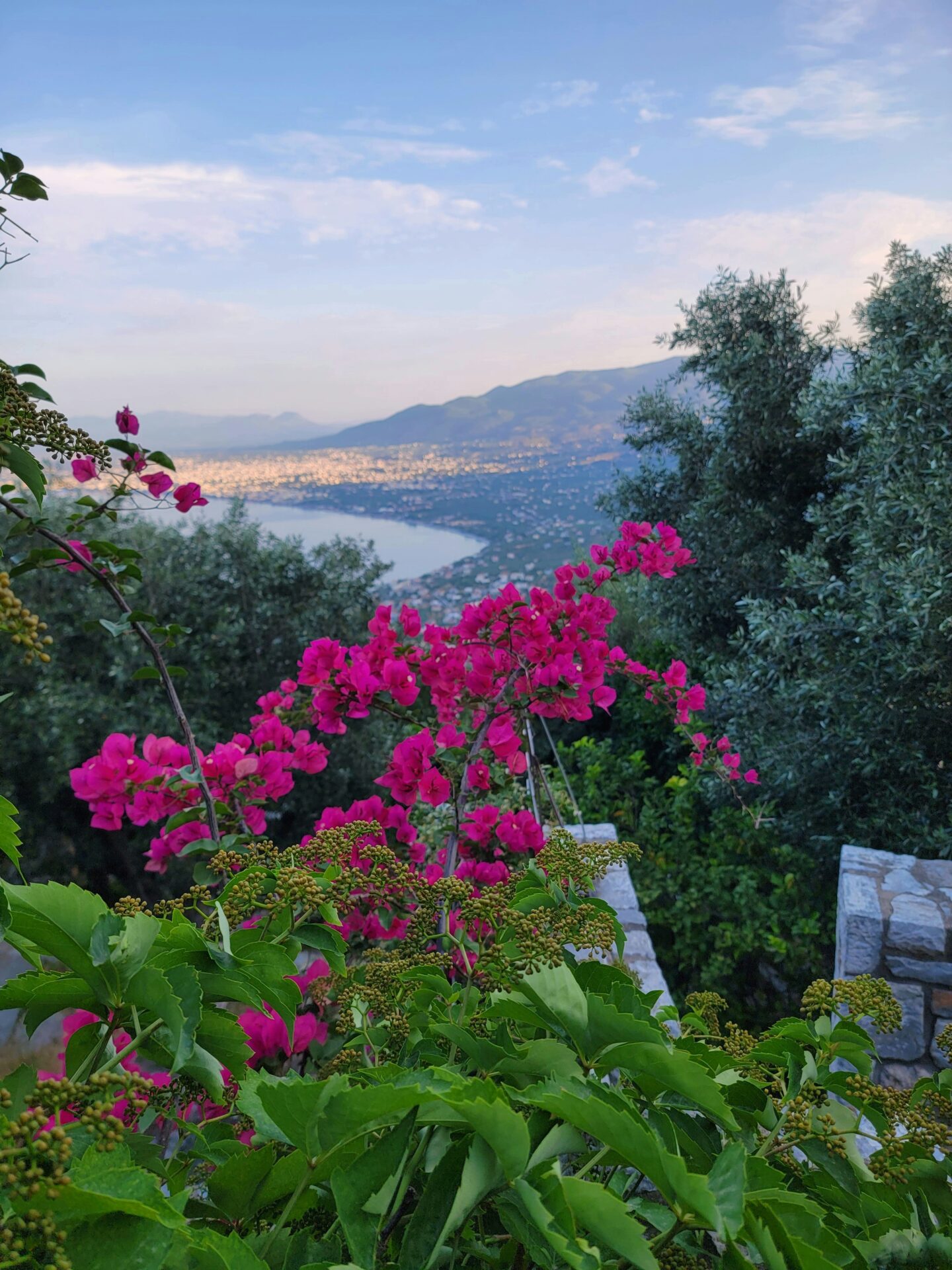
Religion and Sacred Landscapes
Messene’s spiritual side really struck me. The city weaves together sacred places, with temples, sanctuaries, and public altars tied to both local and wider Greek religious traditions.
The Sanctuary of Asclepius stands out. Here, people came for healing and left stone-carved dedications. Messene also honored Zeus Ithomatas, who watched over the region from Mt. Ithome’s summit—marking the city’s spiritual core.
Religious festivals and rituals played a big role in daily life. These sacred spaces aren’t just old ruins; they show how religion connected the community and reflected the city’s changing identity through the ages.

Exploring the Archaeological Wonder
Ancient Messene is where massive ruins meet wild countryside. Every turn revealed something new, from monumental gates to hidden relics that felt untouched by the crowds.
Impressive City Walls and Main Gate
The city’s ancient defensive walls immediately grabbed my attention. They still stretch over 9 kilometers across the hills. The craftsmanship is hard to miss—huge stone blocks, fitted together without mortar.
At the Arcadian Gate, the main entrance, I stopped to admire the towering walls and reliefs carved into the stone. Guards once stood here, scanning the valleys for travelers or threats.
Standing by these walls, I really got a sense of the scale and skill involved. It’s a glimpse into Greek engineering—how they built such solid defenses with local limestone. Even now, the structure feels remarkably intact when you touch it.
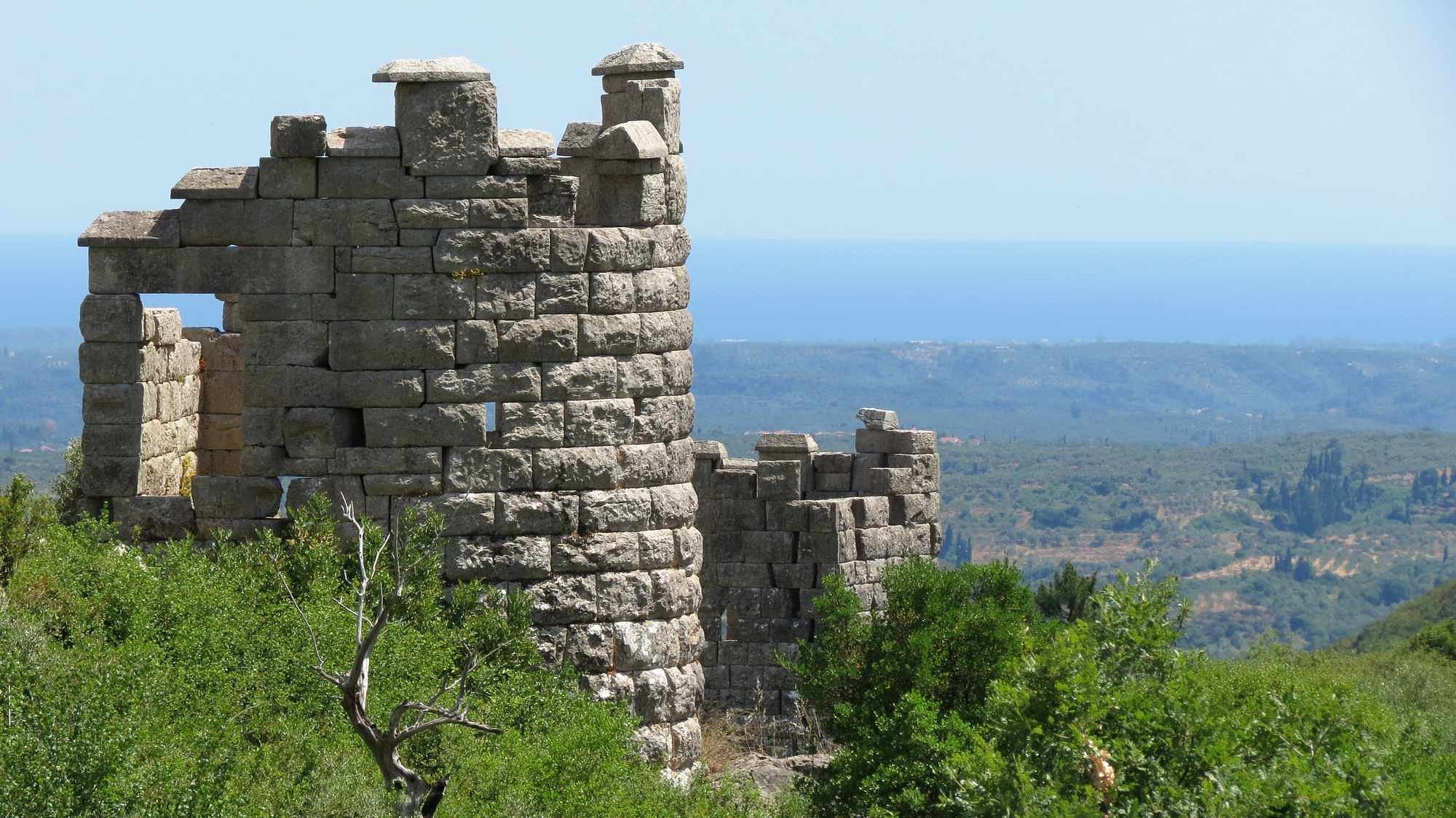
Theatre, Agora, and Public Life
Inside the city, I found the theatre—a perfect place to imagine ancient gatherings. The steps climb the hillside, looking out over the valley. The marble seats, worn smooth by centuries of use, tell their own story.
Then I wandered over to the agora. This was Messene’s lively center, where markets, debates, and festivals unfolded. Ruins of stoas (those long, columned buildings) show off classic Greek architecture, while fragments of sculptures hint at the city’s art scene.
Statues and inscriptions here give historians a window into ancient public life. I could picture merchants haggling, philosophers teaching, and people sharing news under the open sky. It made Greek history feel real to me.
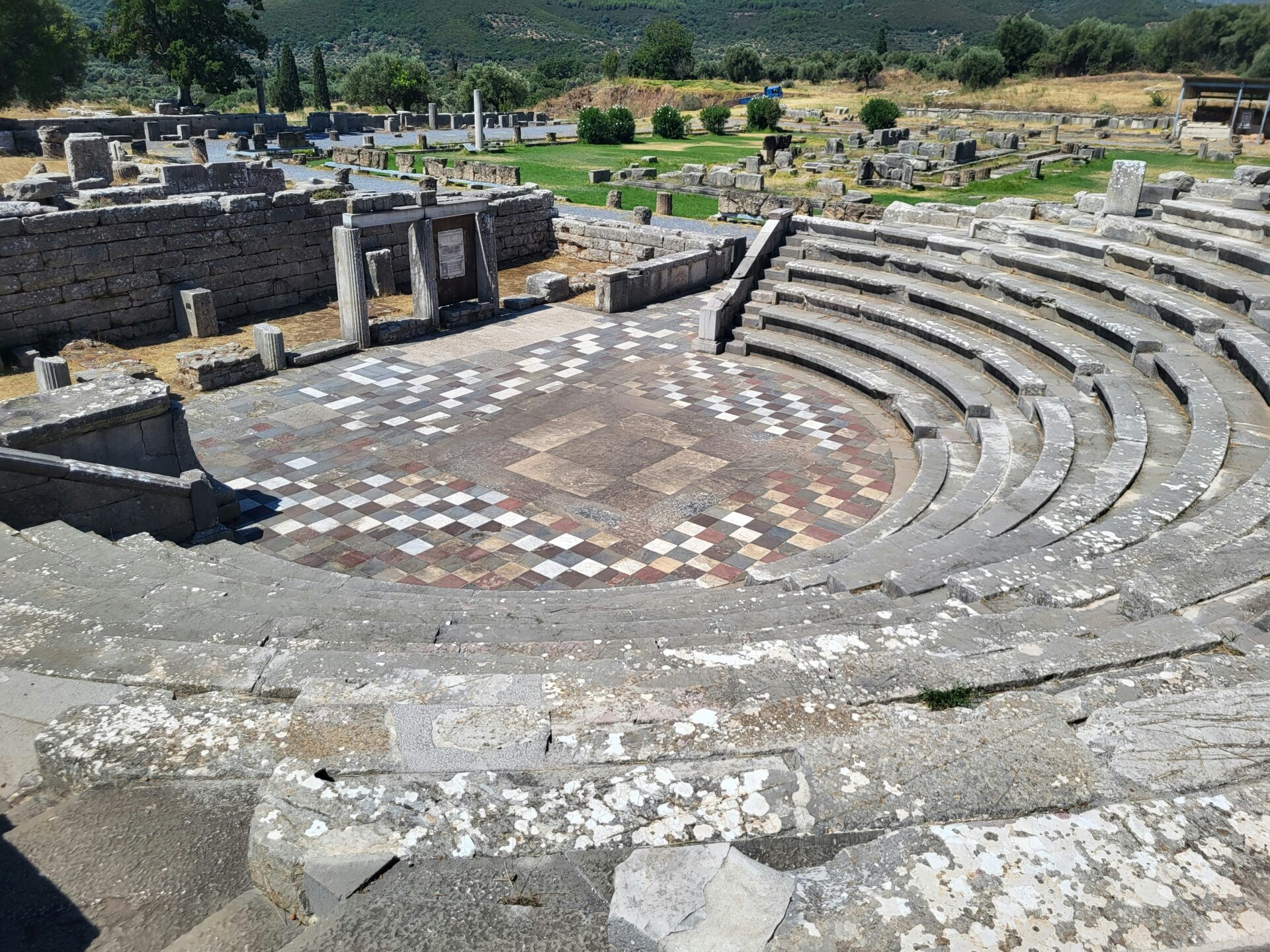
Hidden Gems: Stadiums, Baths, and Local Secrets
Farther out, I nearly missed the stadium—a long, sunken track for athletic contests. The curved stone seating, still mostly intact, echoes with memories of footraces and cheers. I sat there for a bit, soaking in the blend of history and wildflowers.
Nearby, the ruins of ancient baths reveal more of Messene’s clever design. Stone tubs, smart drainage, and smooth marble floors hint at daily rituals of cleanliness and socializing. For the time, these features were pretty advanced.
I also stumbled on smaller temples and shrines off the main paths. Some held weathered sculptures, half-hidden in the grass. These quiet spots ended up being my favorites—places where ancient life felt close and real.
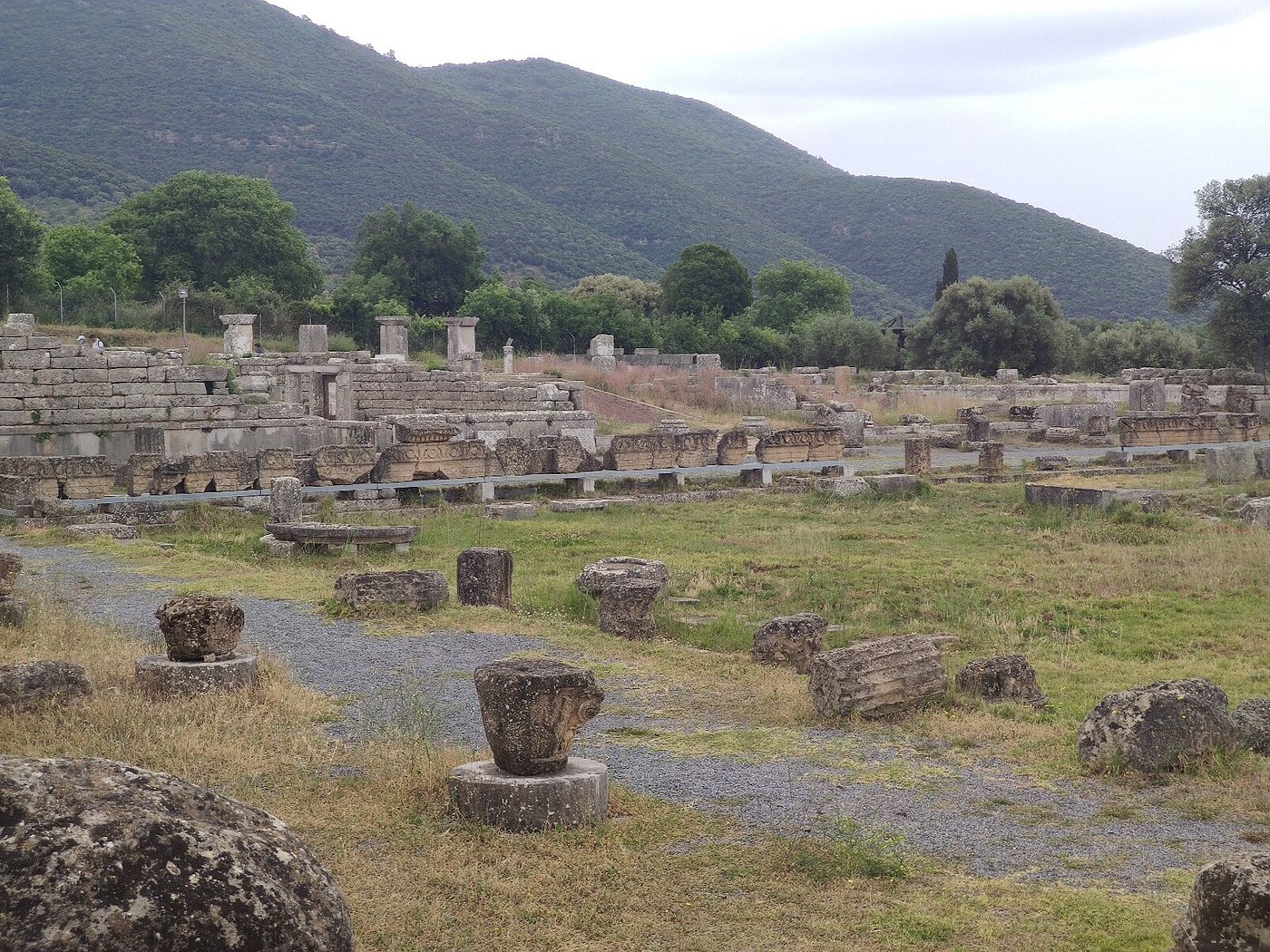
Messene’s Cultural Significance
Ancient Messene isn’t just ruins and columns—it’s where art, politics, and spirituality shaped daily life. The city’s unique mix of culture, intellectual life, and devotion left a real mark on Greek history.
Art, Poetry, and Literary Connections
As I walked through Messene, I imagined poets and artists thriving here. The city had ties to famous Greek writers and sculptors. Messene might not be as well-known as Athens, but it fostered creative traditions in its sculptures, temples, and theaters.
Literary giants like Hesiod and Pindar influenced Messene; their works sometimes featured during local festivals. Ancient Greek playwrights, including Sophocles and Euripides, inspired performances at Messene’s theater. Plays and poetry weren’t just for fun—they celebrated Greek heritage and ideals.
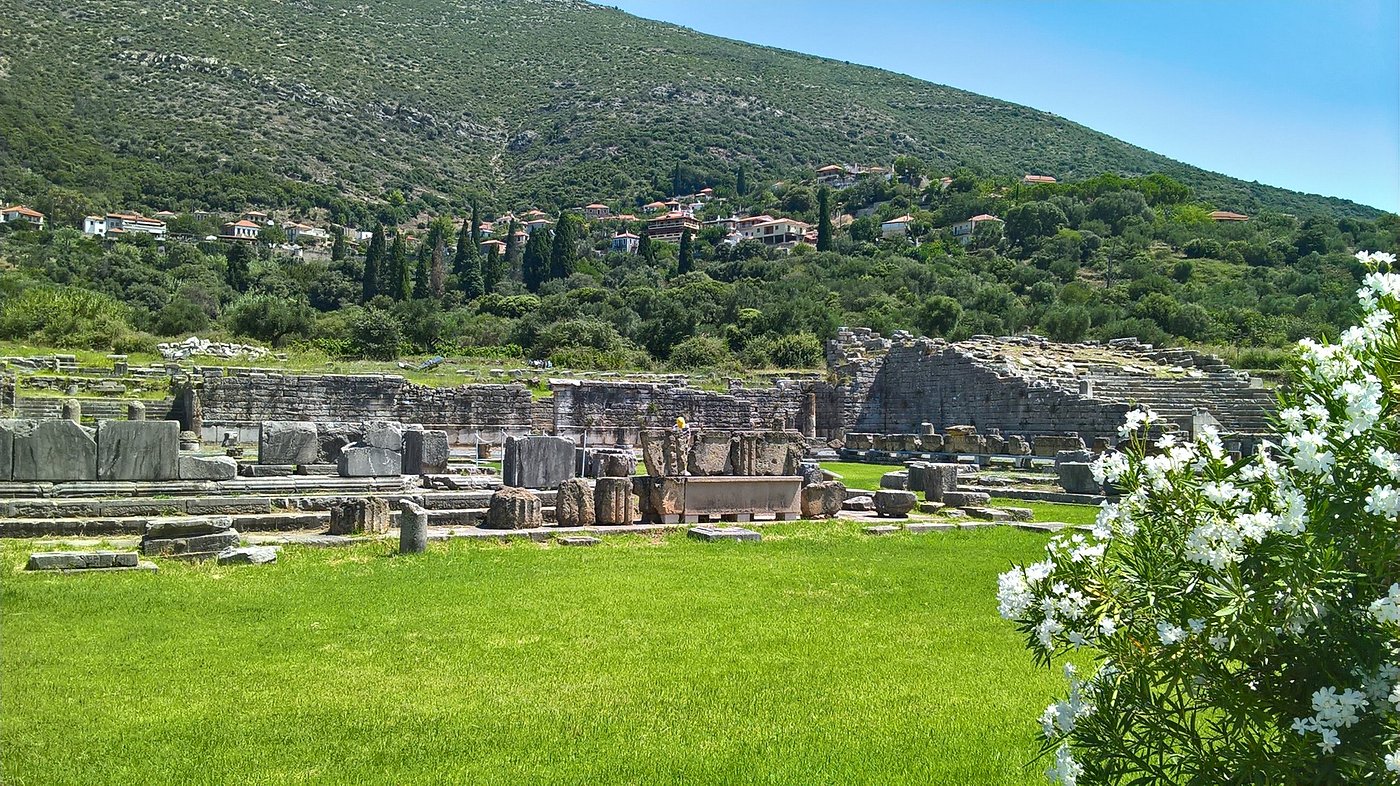
Ancient Messene Through the Ages
Ancient Messene has lived through centuries of change. From its founding in the fourth century BC, through wars, peace, and shifting religions, its ruins tell a layered story of resilience and rediscovery.
From Classical Antiquity to Early Christian Times
I learned that Theban general Epaminondas founded Messene in 369 BC, after the region broke free from Spartan control. Unlike Athens, always in the spotlight, Messene quietly thrived in the fertile valley beneath Mount Ithome.
Temples, a grand theater, a stadium, and city walls over 9 kilometers long made it a strong, organized place.
Messene was never just about stone and marble. It grew into a hub for athletes, philosophers, and politicians. The Romans brought new influences, but Messene’s core layout and spirit stayed the same.
By the early Christian era, many temples became churches. The city kept adapting, staying a center for worship and community life.
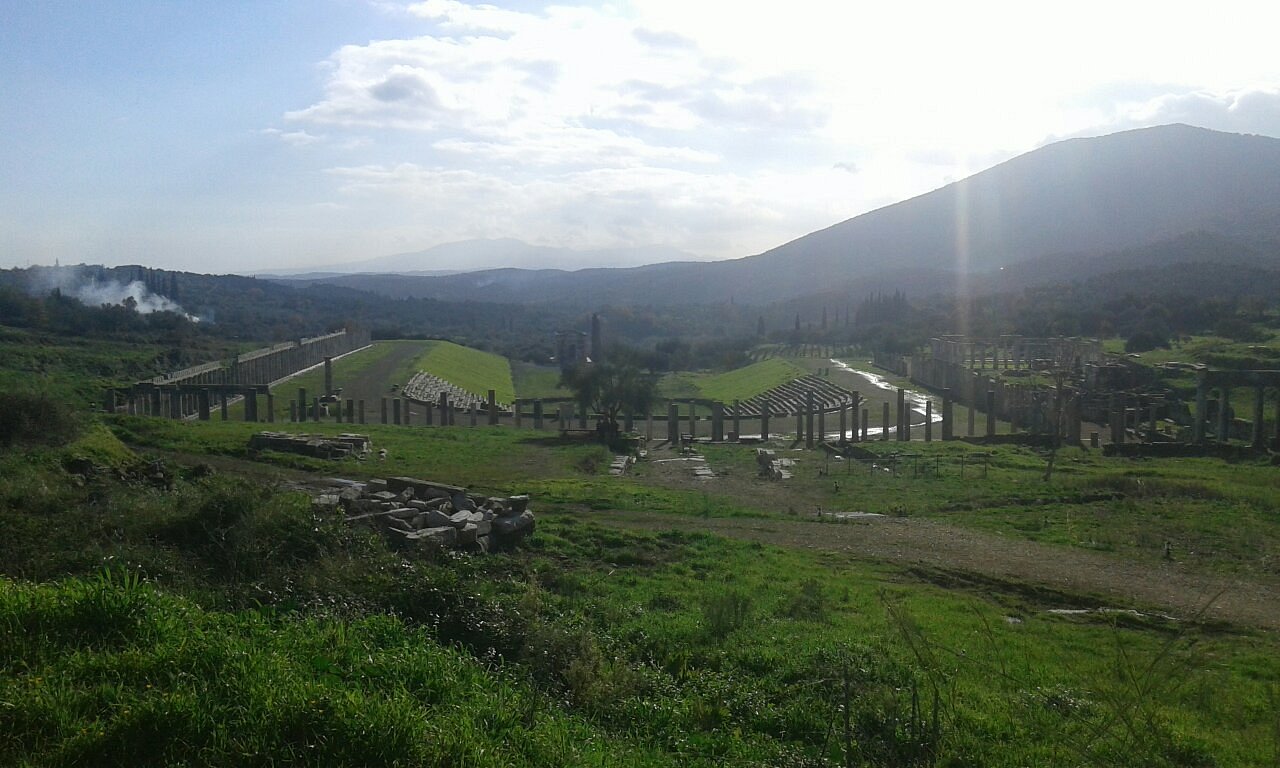
Reception in Modernity and Scholarship
What really struck me was how untouched Messene feels compared to places like Athens. Messene stayed hidden for centuries until archaeologists started digging in the late 19th and 20th centuries.
Modern researchers have been amazed by how much survived. Unlike other Greek sites stripped over time, Messene mostly lay intact under layers of earth.
Scholars still study the inscriptions, houses, and sanctuaries here. Some discoveries have changed old ideas about Greek urban life and revealed how advanced Messene’s public infrastructure was.
Modern visitors, like me, get a special kind of time travel—standing where ancient citizens once stood.
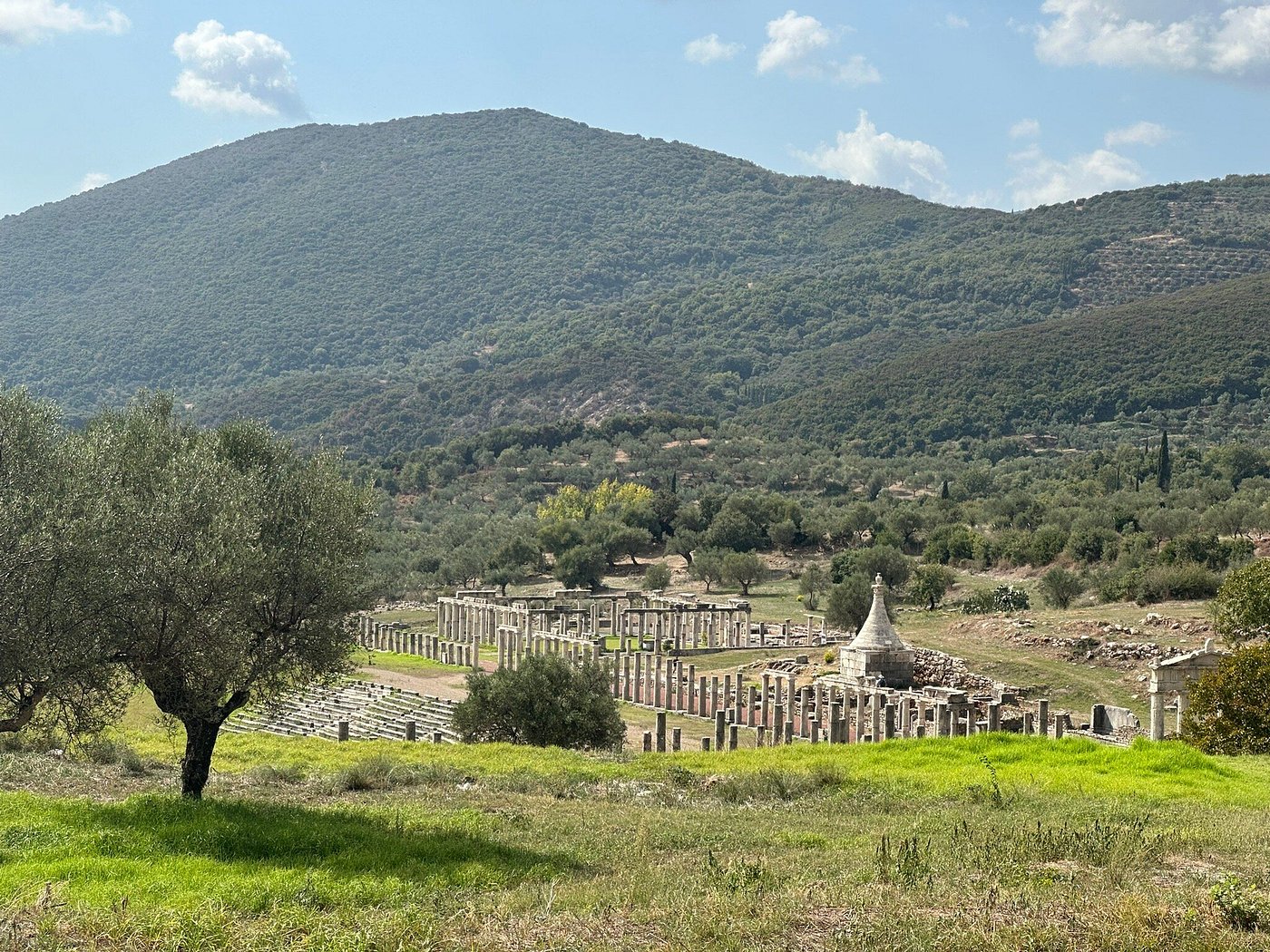
Pilgrimage and Long-Term Legacy
Today, Messene draws history lovers, students, and spiritual seekers. It never became a major religious center like Delphi, but people knew it for local festivals and athletic games dedicated to Zeus and other gods.
Pilgrims in ancient times probably came to pray or compete. Now, it’s travelers like me, camera in hand, making a different kind of pilgrimage.
I watched visitors explore the stadium and theater in near silence, away from the crowds. Walking these ancient streets and seeing early Christian churches built over pagan temples gives Messene a quiet, special legacy.
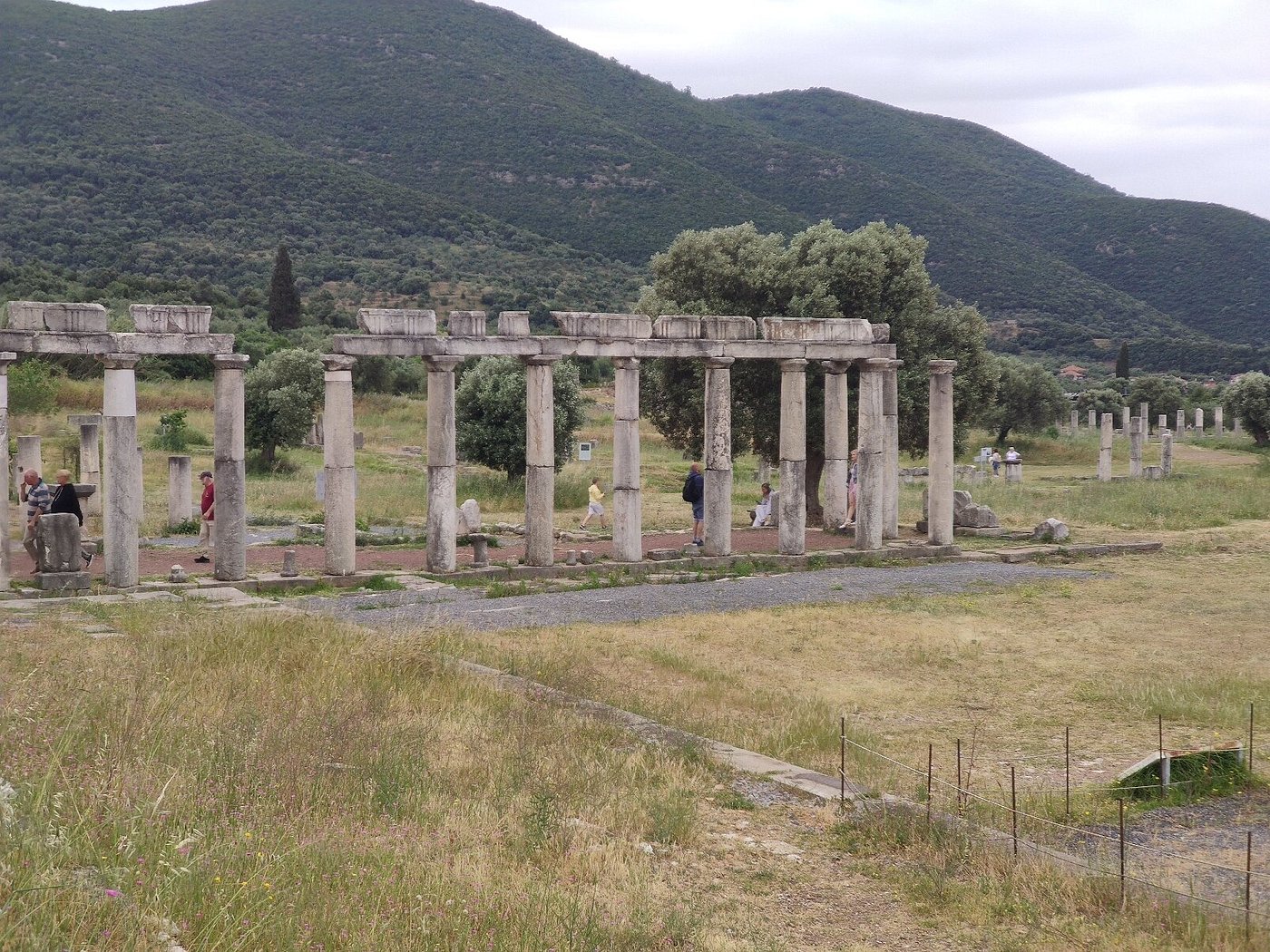
Planning Your Visit to Ancient Messene
Getting to Ancient Messene takes a bit of planning, but it’s worth it. The site is big, open, and can get hot, so some prep really helps—especially if you love ancient history and want to explore at your own pace.
Getting There and Essential Tips
I started my trip from Kalamata, about a 40-minute drive through quiet countryside roads. The site sits in the southwest Peloponnese, so having a rental car gave me the freedom to arrive early and beat both the heat and any crowds.
Travel Tips:
- Wear sturdy shoes—you’ll do a lot of walking over uneven ground
- Bring water, sunscreen, and a broad-brimmed hat—the Mediterranean sun can be brutal
- Arrive early to avoid crowds and midday heat
- There’s a small parking area and a roadside museum, which made a good spot for shade and a quick history lesson before heading into the ruins
I didn’t see many shops or cafes near the entrance. Packing snacks saved me, since I ended up wandering way longer than I thought I would.
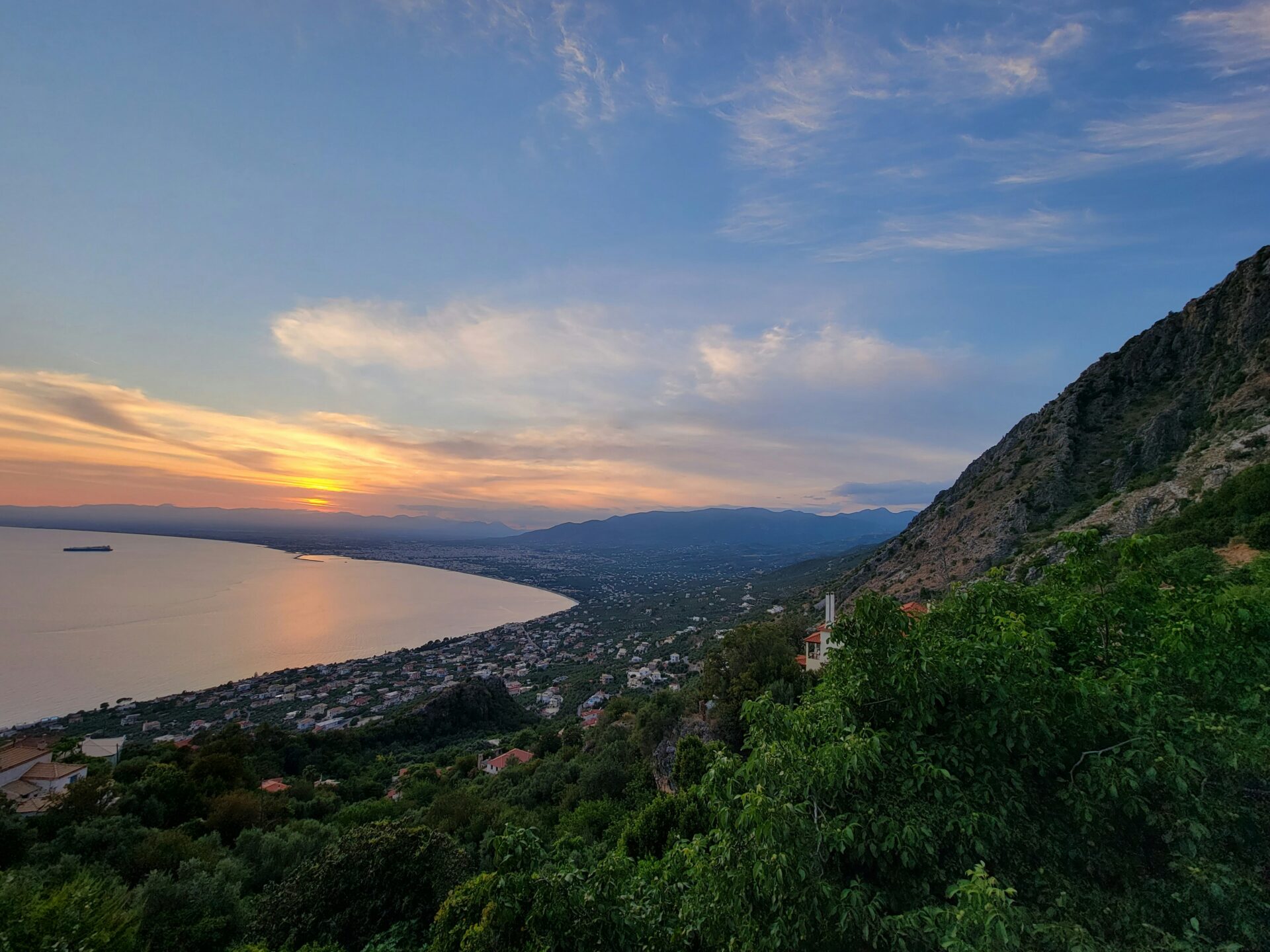
What Not to Miss On Site
The first thing that blew me away was just how huge Ancient Messene is. Unlike other famous sites, you won’t find big crowds here, so I honestly just wandered at my own pace.
The ancient stadium really stands out. When I walked along its enormous track, history didn’t feel distant at all—it felt right there, under my feet.
Key Highlights:
- The Stadium: It’s massive and surprisingly well-preserved. I kept picturing the athletes sprinting and competing all those centuries ago.
- Agora and Theatre: The old columns and stone seats almost seem to hold onto ancient voices. It’s a photogenic spot and honestly, it’s peaceful if you want a quiet pause.
- Sanctuary of Asclepius: The stonework here is beautiful, and the whole area feels calm. I could see why people once came here hoping for healing.
- City Walls: You can spot the walls from all over the place. They really show how important—and seriously fortified—Messene was back in the day.
I noticed plenty of signs in both English and Greek, which made things easier. The ruins are tidy and well cared for, so you can follow your own path or just let yourself get lost in the past.

